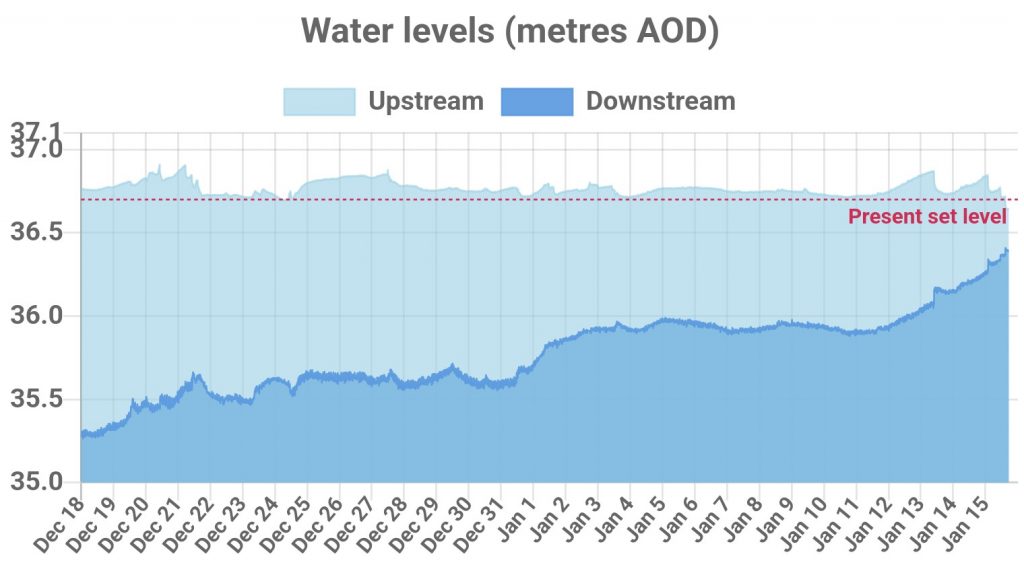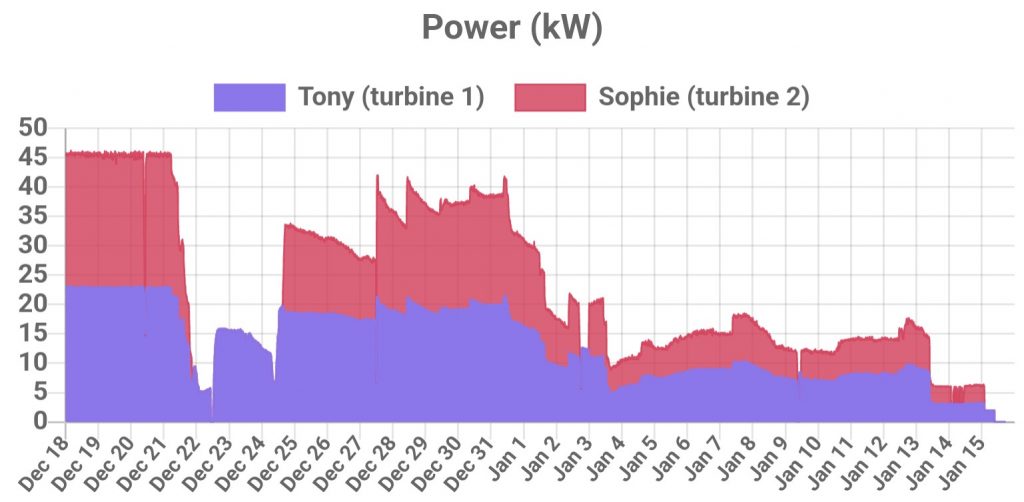Seasoned weather watchers cannot have failed to notice the recent heavy rain over the last few weeks. River watchers will have also noticed the River Thames rushing under Reading Bridge towards Caversham Weir and onwards to Sonning and ultimately London and out to sea, As you can see from the graph below the river flow has increased significantly since 18th December.

So how has this affected power generation at Reading Hydro? Surely more water or faster moving water is a good thing to generate more power? Well it’s not quite as simple as that. As the rains fell across the Thames catchment the flow in the headwaters started to rise as the ground became saturated and the excess drained into the river and its tributaries. Up and down the river lock keepers started opening their weirs to allow the water to drain through more easily and reduce the risk of localised flooding.

As a result the ‘head’ of water at Reading Hydro (difference in height between the river level upstream and downstream) started to reduce.. You can see this quite clearly in the graph above. Our turbines turn due to the weight of water falling through the two screws from the upstream to the downstream. When the head reduces the weight of water has less height to fall and consequently the power reduces. Below 1m head the power loss decreases rapidly and even a few centimetres loss can see a drop of several kWs of power.
As you can see in the graph below the generation has declined greatly since the 20th December. During this time our amazing Clearance team worked nearly every day to keep the screens clear and the water flowing through our turbines. Of course the heavy rain washed a lot of debris down the river, some of which ended up on our screens particularly on the 21 December and over the Christmas and New Year breaks. You can see the difference clearing the screens makes as the power generation jumps up, but then gradually declines as more debris builds up.

Sadly in the early hours of Sunday morning the increasing river flow and high downstream level reduced our head to below 0.5m at which point Turbine 2 shutdown while Turbine 1 was only generating 2kW. The decision was taken to shutdown the system until levels improve and the all-important head rises to a sustained level. With the weather forecast set to become drier for the next few days we are crossing our fingers that the river levels will change in our favour.
